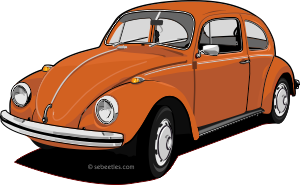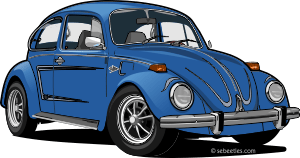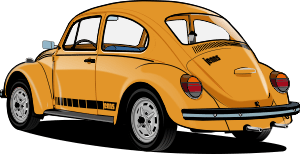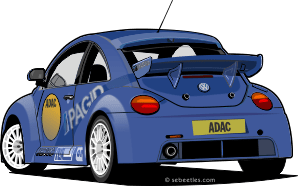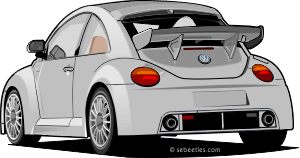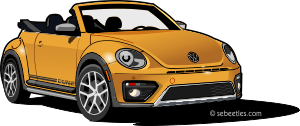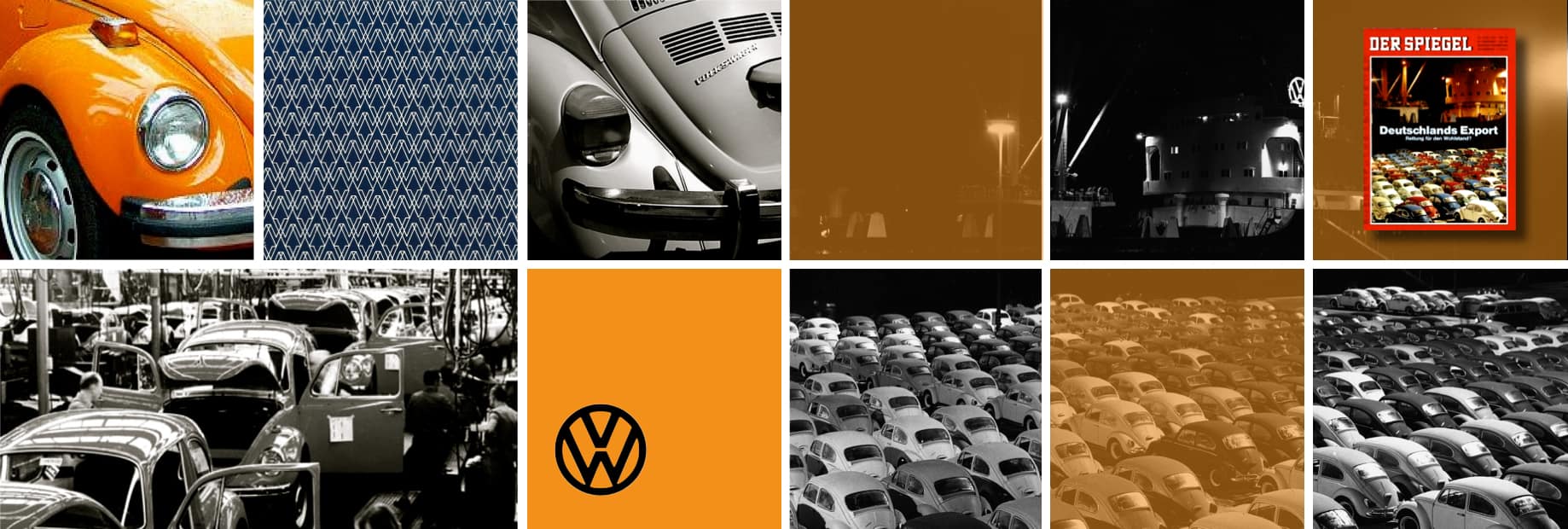
European manufacture: “Inland’ and “Export” markets.
As the Volkswagen organisation spread worldwide establishing main and subsidiary factories so did the available variations of Beetle. These main factories supplied Beetles not only to the country in which the factory was located but in most cases exported them to designated zones as well.
Those exports took two forms: finished whole vehicles and vehicles in CKD (completely knocked down) form for local assembly.
Broadly there were four main factory variations on the development of the Beetle theme: Europe, Brazil, Mexico and South Africa.
The substantive design and style of Beetles assembled on CKD assembly lines, or on localised satellite production lines, can be traced back to one of these four centres of design influence. Localised variations in bodywork and fittings were developed according to local needs and local technical or legislative requirements.
This section of SEB history deals specifically with the European models manufactured between 1970 and 1979.
Volkswagen parts lists from this era including those of the “M’ options and “S” packs (explained in article E1/d) all conform to a consistent theme in terms of market terminology.
“Inland” meant the German home market.
“Export” (by 1970) meant the other markets supplied from European manufacturing plants – with the exception of the USA and Canada (Kanada) which although of course significant export markets in their own right were separately and specifically identified as USA and Canada.
The reason for separating the US and Canadaian specification models as distinct from other export markets was that those two markets had increasingly specific legislative requirements that dictated the installation during manufacture of safety and environmental protection equipment not required at that time in the European markets.
(Type approval markings indicated the respective authorisations: “SAE” for North America. “E” for Europe. These respective approvals are most easily seen by markings moulded into the plastic of rear lamp lenses for example. By 1974 EEC requirements had become very specific about all new vehicles carrying such approval markings).
So by the 1970’s and the period covered by this section of SEB history:
“export” effectively meant models sent to all the, then, Western European markets. The substantive markets, each with their own Volkswagen importing organisation, being the Netherlands, Belgium, France, Austria, Switzerland, Italy, Spain, the United Kingdom, Republic of Ireland, Denmark, Norway, Sweden and Finland.
This list is not exclusive however and European production Beetles were exported to other mediterranean, middle eastern, north african and far eastern markets. A notable far eastern market being Japan. Distribution in some of these areas was via importers who operated on a regional basis.
Portugal and some of the countries in the Middle East were interesting markets in that not only were models sold there sourced from European manufactured stock but also from Brazil.
European manufacturing bases supplying the “Inland” (German home), “Export” (European), US and Canadian markets with SEB’s between 1970 and 1979 were:
European model Beetles were also assembled between 1970 and 1977 in the Republic of Ireland but we do not have evidence of SEBs having been assembled there.
European model Beetles were also manufactured at the TAS plant in Sarajevo between 1973 and 1976 for the Yugoslav home market and again we do not have any evidence of SEBs being included in that production.
It is important to understand that whilst the specifications of models exported to the USA and Canada were very clearly defined (and therefore easily attributable to specific model years) the situation within Europe was still very flexible.
The European Economic Community (EEC) regulations prescribed minimum mandatory equipment specifications for any particular year across the whole Community but within that framework member states were still prescribing additional detail requirements.
This led for example to local variations between member states – a visible example being that of whilst most European member states required amber front and rear indicator lamps Italy required white front indicators. Another example is that Danish law required the fitting of front indicator side repeater lamps many years ahead of it becoming obligatory throughout the whole ‘Community. A quick browse through the Type 1 M Codes section will throw up quite a few examples of such detail changes required by an individual nation.
From a point of view of SEB’s understanding the details of any one particular ‘Edition is further complicated by a significant variation in the order-able factory options that could be added to Beetles in any one specific market.
This had a knock on effect in the variations in equipment fitted to any apparently identical SEB series depending on the market to which it was destined.
Throughout the period 1970 – 1979 Volkswagen model years (BJ) ran from August to the following July. The reason for this had been established quite a while previously with the tooling up for new models being done during the annual works summer holiday shutdown in readiness for launching new models when production restarted after the break.
A 1973 model year Beetle therefore was produced between August 1972 and July 1973.
Some export markets including the UK were, at this time, subject to several months delay in getting new model year production. There were occasions for example when UK buyers did not see new model year cars until the winter – or even the following New Year.
